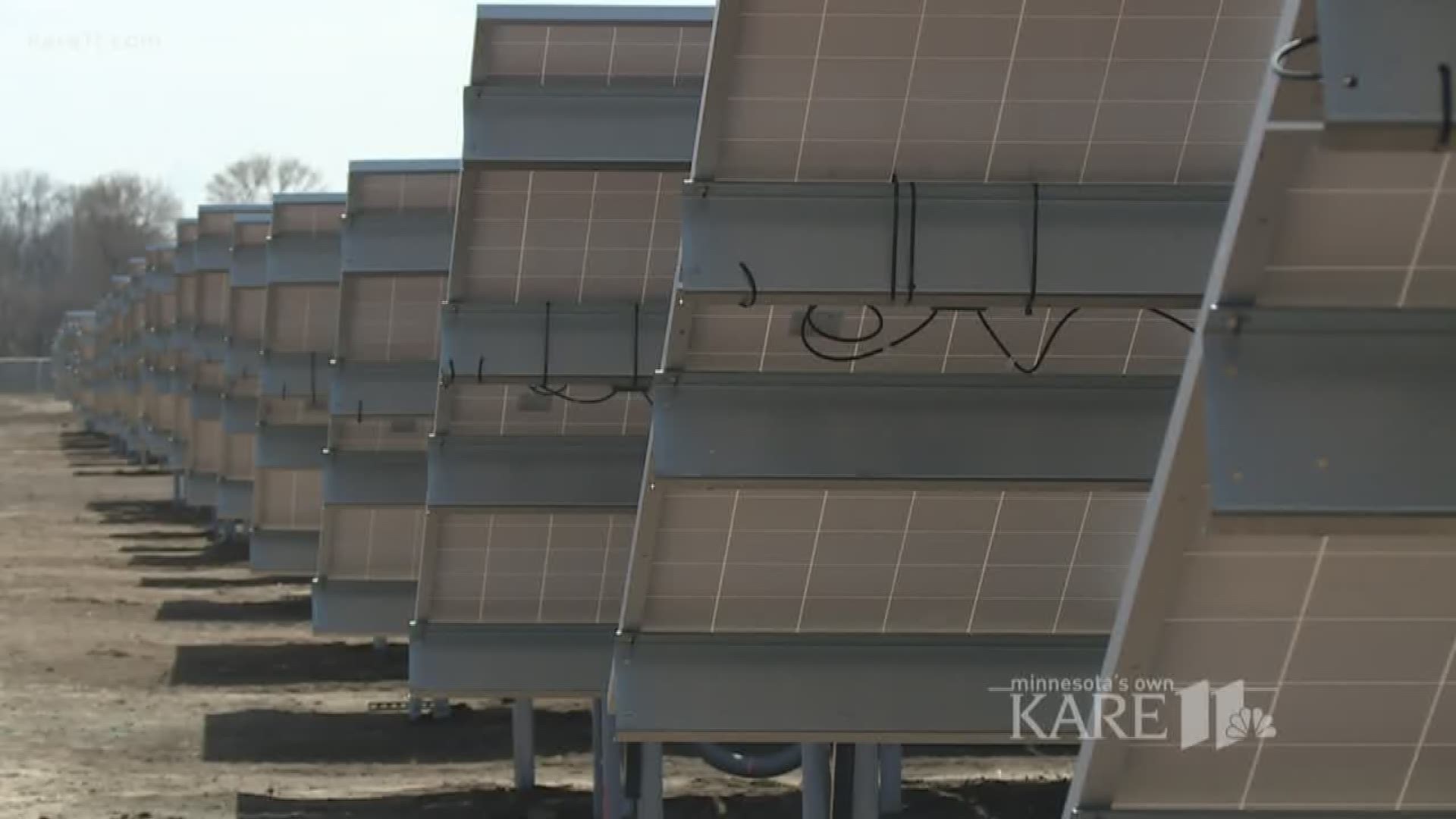COTTAGE GROVE, Minn. - A solar farm outside Cottage Grove is one of eight in a new network opened by Clean Choice Energy, and those interested can now begin signing up if they live in one of 32 Minnesota counties and get their power through Xcel Energy.
"You don't have to be a homeowner, renters can sign up as well,” said Kate Colarulli, spokesperson for Clean Choice Energy. “All you need to do is have an Xcel electricity bill."
A limited number sign up for a paid subscription to get their power from panels here, and they then get credits on their bills.
"It allows you to go solar and save money on your utility bill without having to put solar on your rooftop,” Colarulli said. “Today’s announcement is actually going to increase the number of residential subscriber opportunities by 50 percent."
And that's a big deal in a state is already a national model for this type of program.
“Our community solar program is number one in the nation,” said Bill Grant with the State Department of Commerce.
Grant says legislation that was passed five years ago has opened the door to community solar.
"Whereas we expected maybe 100 megawatts of interest, we got 1,000 megawatts in the first couple of months that the program was opened and it took everyone by surprise,” he said.
At the beginning, they had more demand than supply.
“But now I think we've got that supply chain in place and we're really moving,” Grant said.
If you need proof, the state went from 37 megawatts of capacity in 2015 to 715 by the end of 2017.
That's enough to power 132,000 homes.
And it's not all through community farms. But the other sources are harder to spot.
"We don't necessarily want to see it from the ground,” said Eric Pasi with IPS Solar.
IPS Solar found just enough space atop a historic Northeast Minneapolis building to help a small business tap into its own solar potential.
"We can actually see, down to the panel, exactly what's happening,” Pasi said.
Thanks to an app, the owner of the Coffee Shop Northeast, Rich Horton, knows 25 to 35 percent of the electricity used by his business is offset by solar panels, which he had installed during a required roof repair.
“I was able to finance it all together so it made total sense to get the solar and the roof at the same time,” Horton said.
Though some state and federal subsidies are going away, individual installations still usually pay for themselves in seven to 10 years.
"There are less incentives, but the good news is that systems themselves are much less expensive,” Pasi said.
If you're interested, the Department of Commerce has several online tools to help you look into solar power, including an interactive map that lets you check out your property and its solar potential. It even gives an estimate of how long it would take before it pays for itself.
"Now is a good time, I think, to get into solar,” Grant said. “If you've been thinking about it, I would urge people not to wait."
The same holds true if you're looking to subscribe, because each farm only has so many openings.
"We expect, actually, these farms to sell out very quickly over the next couple months, so if you are interested you should check it out today,” Colarulli said.

